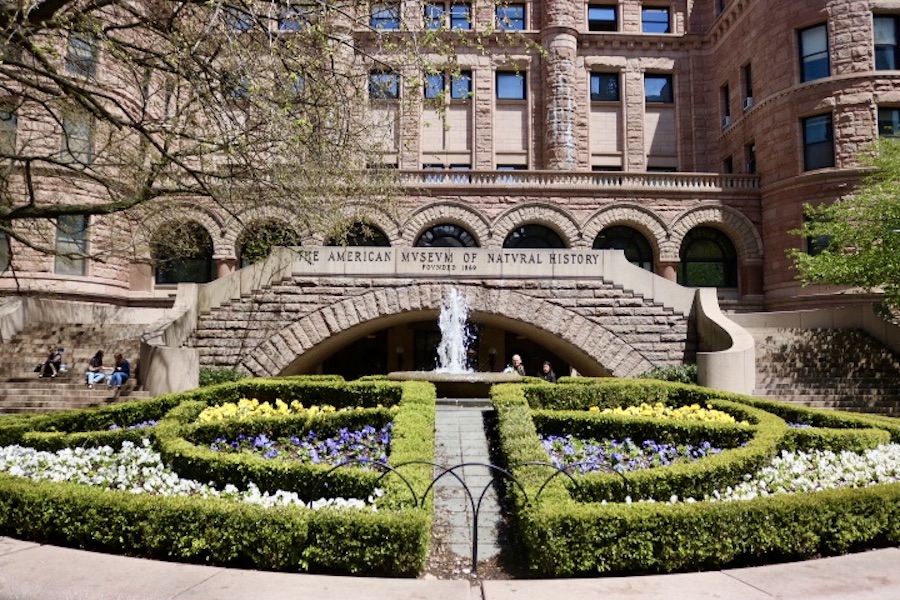
- Details
- By Jenna Kunze
A New York museum that tribal representatives call one of the worst offenders of federal repatriation law has announced new policies for removing human remains from display cases and said it plans to double down on repatriation efforts for the more than 12,000 individuals it holds in its facility.
On Oct. 12, Sean Decatur, the new president of the American Museum of Natural History, announced the policy changes to staff in an open letter. Immediate changes include preparing new storage for the remains in the museum’s collection, and removing human remains—such as human bones, skeletons, mummies, and beads and instruments made from human bones—from 12 display cases.
According to a spokesperson for the museum, none of the display cases contained the human remains of Native ancestors.
In advance of the letter, the museum’s Board of Trustees adopted an updated Collections Policy and created a formal repatriation procedures document “that recognize the return of human remains as an integral part of stewardship and, for the first time, create additional avenues to advance those efforts, in partnership with descendant communities.”
Of the 12,000 human remains in the museum’s collection, about 2,200 are Native American ancestors, according to Decatur. Human remains came to the museum from archeological expeditions, private collectors, and local medical schools that used bodies of deceased individuals for anatomical study, he said.
“We must acknowledge that, with the small exception of those who bequeathed their bodies to medical schools for continued study, no individual consented to have their remains included in a museum collection,” Decatur wrote. “Human remains collections were made possible by extreme imbalances of power. Moreover, many researchers in the nineteenth and twentieth centuries then used such collections to advance deeply flawed scientific agendas rooted in white supremacy – namely the identification of physical differences that could reinforce models of racial hierarchy.”
The museum now acknowledges an ethical obligation to return all human remains in its collection, but it’s been under a federal order to do so for the 2,200 Native Americans ancestors it’s held captive for more than 30 years.
The law, the Native American Graves Protection and Repatriation Act (NAGPRA) passed by Congress in 1990, required museums and federal institutions that possessed Native American human remains and their burial objects to catalog and return those ancestors and belongings within five years.
Like many institutions throughout the country, the American Museum of Natural History, has been slow to make good on NAGPRA. Over the law’s 33 years, the museum has returned close to 1,000 Native ancestors, according to Decatur.
Tribal representatives say they are “cautiously optimistic” about the museum’s new policy, in part because AMNH is infamous across tribal communities as “one of the most egregious violators of federal law,” said Harry Wallace, Unkechaug Nation Chief from the Poospatuck Reservation in Mastic, Long Island. Wallace has been working with institutions to repatriate his ancestors since the ‘90s.
But since 2005, the AMNH has resisted his requests using a loophole in NAGPRA, a “culturally unidentifiable” classification that has allowed for museums to delay repatriation indefinitely.
In 2019, a coalition of five tribal nations on Long Island that call themselves the Shinnecock Nation Graves Protection Warrior Society asked AMNH for the return of close to 60 ancestors who were excavated from Long Island, including Queens, Nassau, and Suffolk counties.
Less than 24 hours after AMNH announced its policy overhaul, Wallace and the Shinnecock Nation Graves Protection Warrior Society received a long-awaited response from the museum.
On Oct. 13, the museum’s director of cultural resources, Nell Murphy, responded to the Shinnecock Nation Graves Protection Warrior Society’s 2019 joint repatriation claim to remains for 52 ancestors and 50 associated funerary objects excavated from Nassau County that the museum has held since the early 1900s.
Murphy wrote the museum’s Cultural Resources Committee (CRC), agreed to extend cultural affiliation to include “descendants of both Munsee and Southern New England Algonquian-speaking peoples on Long Island,” which includes the Shinnecock Nation.
“Just a couple days ago, we got this notice of inventory completion, which seems to be timed together with this news release,” Tela Troge, attorney for the Shinnecock Nation and a member of its Graves Protection Warrior Society, told Native News Online. “Reading the policies makes you cautiously optimistic. It’s like, wow, this is great. But at the same time, NAGPRA has been the law for 33 years and we're just receiving this notice four days ago? What does that tell you about the institution?”
The policy overhaul by the American Museum of Natural History is part of a larger movement of racial reckoning museums and higher education institutions throughout the country are being forced to address.
In the last two years, at least three Ivy League institutions—Harvard University, Dartmouth College, and the University of Pennsylvania—have been called out by the media for their possession and use of human remains from Native American ancestors or formerly enslaved African Americans.
A fourth Ivy, Cornell University, profited from dispossessing 251 tribal nations from their homelands, according to a report from the university’s American Indian and Indigenous Studies program.
Late last month, the Penn Museum published its own revised policy for dealing with human remains that stops short of protecting human dignity and rights, critics say.
The museum, which holds 400 Native American ancestors in its collection, will continue to allow limited research on human remains, teaching for upper-level classes, and display of human remains that are wrapped or enclosed.
Margaret Bruchac, professor emerita of anthropology at Penn and a citizen of the Nulhegan Abenaki Nation, told Native News Online the new policy is partially in response to poor media coverage exposing the university’s unethical museum practices, rather than the long-standing complaints it received from tribal communities.
“What the museum is trying to publicly signal is that they are aware of their past misdoings, they are aware of the complexities of these collections, and that they want to reach out to and collaborate with federally recognized tribal nations to resolve this,” Bruchac said. “But at the same time, they are also signaling to the scientific community that they still support biological research, they still believe there is value to the study of other peoples remains, and they will not interfere with what they consider valid scientific research.”
Repatriation expert Shannon O’Loughlin (Choctaw) told Native News Online that Penn’s new policy “ignores the fact that the Native American Graves Protection and Repatriation Act confirms that institutions have no legal right to Native human remains, yet they still treat our relatives’ bodies like property – our grandmas and grandpas, subject to handling and extractive research done without our ancestors’ consent or ours.”
Native advocates have been trying to get AMNH to affiliate and return their ancestors and sacred and cultural items for more than 30 years, said O’Loughlin, who serves as the Chief Executive and attorney for the Association on American Indian Affairs.
“The American Museum of Natural History has been one of the worst institutions for Native nations to deal with, even though the Native American Graves Protection and Repatriation Act has mandated that the institution repatriate ancestors and other cultural items,” she said. “They currently have about 2,000 Native bodies — 97% of which are ancestors with known geographic locations that are connected with Native nations’ homelands.”
But Chief Wallace and Troge are hoping that the codification of NAGPRA in the museum’s newly developed Repatriation Procedures sets the stage not only for their own ancestors' remains, but also for other descendant communities.
“As a Native attorney, I love to see Native statutes being used as a gold standard,” Troge told Native News Online of the new policy, which cites NAGPRA as the governing law for the museum’s procedures dealing with human remains.
“This is an issue that concerns Native people, but it also concerns enslaved people and their lineal descendants,” Troge said. “That's why I'm cautiously optimistic, because [this policy] expands NAGPRA and uses NAGPRA as a gold standard to set [AMNH’s] policies for other human remains. It’s promising, but it’s long overdue, and it’s not completed yet.”
More Stories Like This
Supreme Court Victory Secures Alaska Native Subsistence Fishing RightsThree Kings Day Feast Honors Pueblo Self-Governance Rooted in Pre-Colonial Traditions
Navajo Council Committees Tackle Grazing Enforcement, Code Revisions
U.S. Must Fulfill Obligations by Protecting Programs
50 Years of Self-Determination: How a Landmark Act Empowered Tribal Sovereignty and Transformed Federal-Tribal Relations
Help us defend tribal sovereignty.
At Native News Online, our mission is rooted in telling the stories that strengthen sovereignty and uplift Indigenous voices — not just at year’s end, but every single day.
Because of your generosity last year, we were able to keep our reporters on the ground in tribal communities, at national gatherings and in the halls of Congress — covering the issues that matter most to Indian Country: sovereignty, culture, education, health and economic opportunity.
That support sustained us through a tough year in 2025. Now, as we look to the year ahead, we need your help right now to ensure warrior journalism remains strong — reporting that defends tribal sovereignty, amplifies Native truth, and holds power accountable.
 The stakes couldn't be higher. Your support keeps Native voices heard, Native stories told and Native sovereignty defended.
The stakes couldn't be higher. Your support keeps Native voices heard, Native stories told and Native sovereignty defended.
Stand with Warrior Journalism today.
Levi Rickert (Potawatomi), Editor & Publisher

